Throwback: Alice in Wonderland
- Laura Slinger

- Dec 17, 2017
- 5 min read

Lewis Carroll's episodic fantasy stories have been translated on to screen more than 20 times, but Disney's animated version arguably remains the best, perhaps because a cartoon is the ideal way to bring such quirky characters to life. Walt had a mind to adapt Carroll as far back as 1933, envisioning silent star Mary Pickford in the role of a live-action feature, but didn't commence production until after the war. Alice in Wonderland, the children's classic by Lewis Carroll about the girl who falls down a rabbit hole, is presented by Disney in this lively and tuneful version. Alice is reading with her sister when she sees a white rabbit, fully dressed, muttering about being late. She follows him down a rabbit hole to Wonderland, where she grows bigger and smaller, meets the Cheshire Cat, attends a mad tea party, talks to a caterpillar who puffs on a hookah, and triumphs over the Queen of Hearts, before finding that it was all a dream. The film has become most notable for the vibrant color and fanciful backgrounds created by legendary artist Mary Blair, whose distinctive style has become intertwined with classic Disney, from the character designs of It's a Small World to the concept art for many of the studio's most popular works.
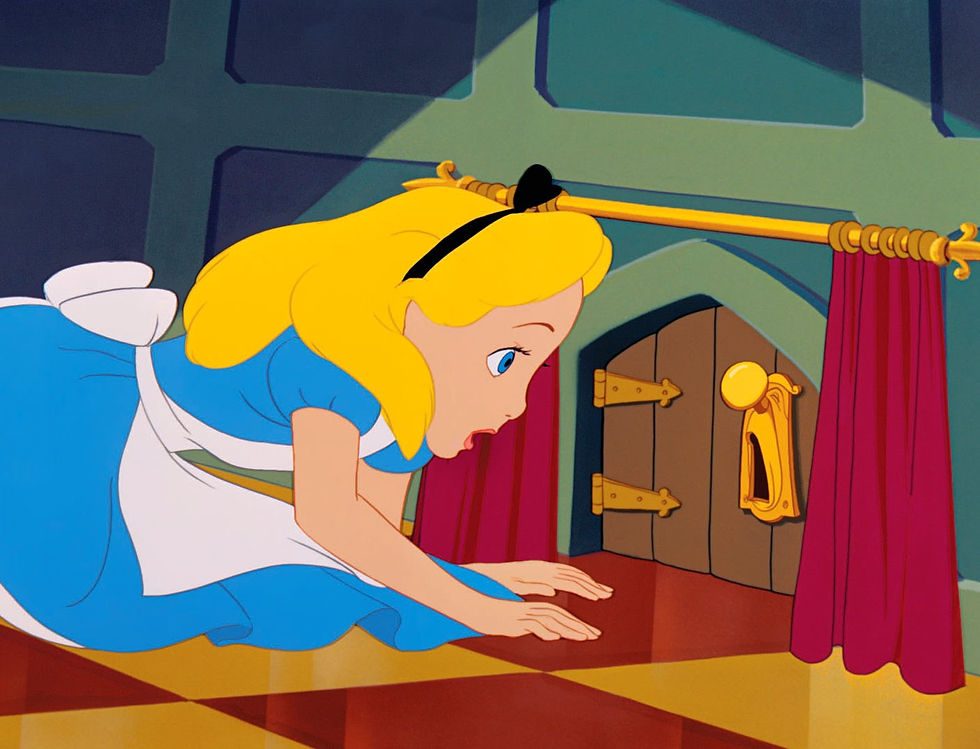
Alice, one of Disney’s most endearing protagonists, who talks to herself, gives herself counseling, and remains just as imaginative, creative, curious, and odd as the creatures and normally inanimate objects she converses with. She scares easily, but her voyage into the idiotic unknown is never nightmarish. And when she learns a thing or two about following good advice, it’s also not preachy. Alice has no real hero, she's really just a girl dozing off during her studies,
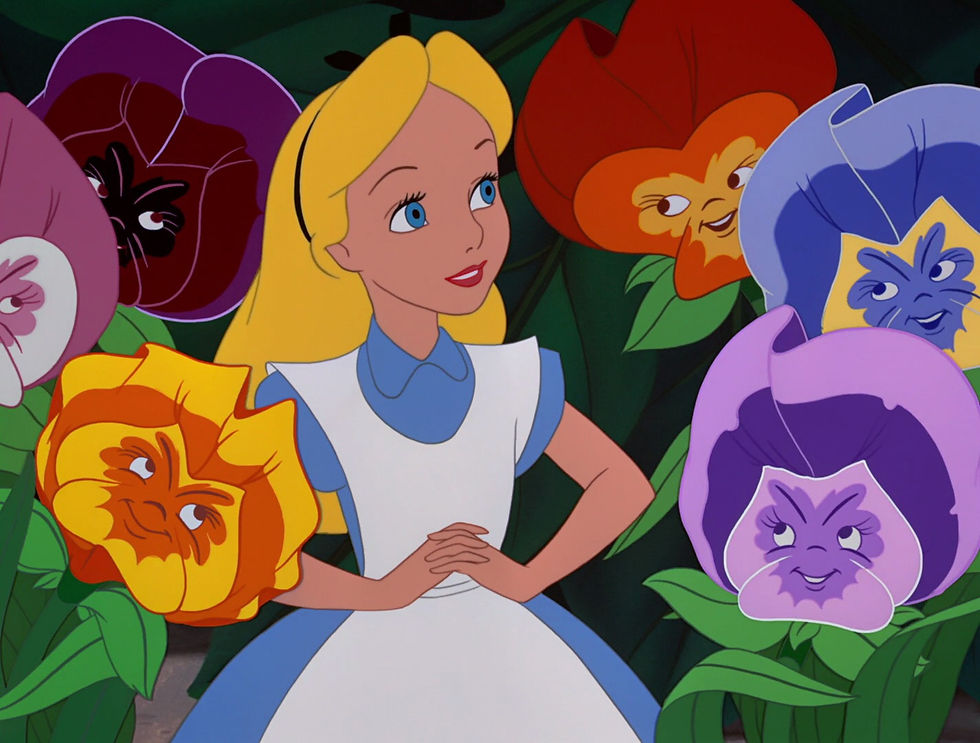
The fabulous Mad Hatter, while a wonderfully lunatic clown, giggles and chirps in the familiar and inseparable voice of Ed Wynn. The March Hare, as crazy as the Hatter, is Jerry Colonna to the ear. The mind's eye beholds these two comedians, rather than the unique conceits of Mr. Carroll. The Cheshire Cat, too, while richly comic in a vagrant and lunatic way, is mainly a cartoonist's triumph, plus the fey-voice of Sterling Holloway. The haughty Caterpillar is a beautifully complicated snob who sits on a leaf, smokes his hookah and blows gorgeously multi-colored vowels. A very clever demonstration of Disney, not Carroll, inventiveness. Likewise a whole new set of creatures called Mome Raths appear in one place, honking and scooting about like crazy. The Queen of Hearts is still the psychotic villain of the piece, but everyone in Wonderland is a bit of a villain throughout, all out for themselves and all against Alice. It’s a wake up call for Alice in the long run, to make sure that even with a bit of nonsense, some order is always needed. The characters all have their own style, their own nuances and we can’t help but love each one in their own way.

Now Alice in Wonderland is by far not my favourite Disney movie, but that's not to say that Alice doesn't have its charms, but when you consider it was released in between the better-crafted and more well-received Cinderella and Peter Pan, it's evident it doesn't represent the ultimate in Disney's feature animation achievements of the era. When it first came out 1951, the film received little praise from critics and audiences. Plagued by a meandering narrative and musical diversions that don't progress the plot, it seems more like a collection of scenes than a coherent feature film. Disney wasn't so much interested in staying faithful to Lewis Carroll's original work as he was intent on presenting a beautiful world full of imagination, whimsical characters and a melodic score. When judged through that prism, Alice can be considered a success. Though it may not add up to more than the sum of its parts, animation fans have come to appreciate Alice in Wonderland over the years for the care and effort put into it, despite its flaws. This is an adaptation of two of the books, Through the Looking Glass and Alice in Wonderland, and Disney and gang had to handpick the best bits to make a film that wouldn’t be over 3 hours. Trimming the fat, so to speak, to make a very concise overview of the books, a summary of the best bits really.
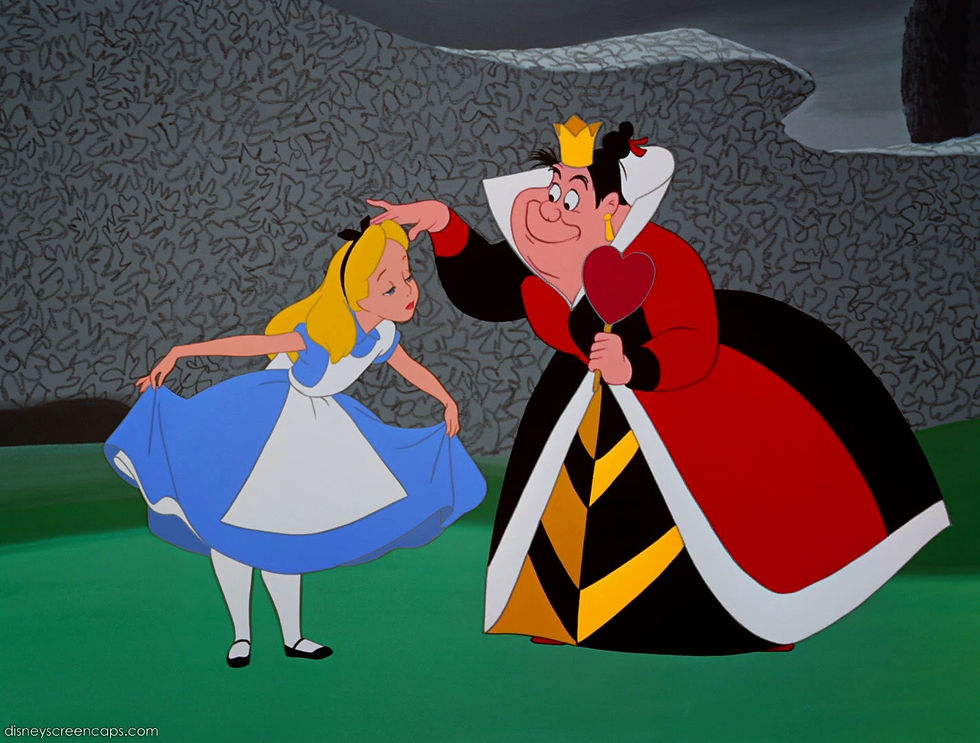
What makes the film so ingenious, lighthearted, and riotously silly are the expressive characters that often speak in rhyme; the strange narratives, the best of which is a horrifyingly sad story about a walrus that eats baby oysters with cute, fat-cheeked faces; and the ever-present songs that are catchy, witty, and fit into the story more perfectly than many of Disney’s other animated ventures in which songs were included for the sake of having characters sing. Just about any unnatural, kooky thing works better in the undefined fantasy world, full of great imagery and dialogue that is quirky and illogical. Although in the movie industry today it is considered a cop out, but having the movie end as a dream concludes simply, smartly, and without dwelling on anything unnecessarily. The film itself is a bit nonsensical, with randomness being the key to this film’s success. It took Walt Disney 30 years from the age of 21 to see his dream project made before his very eyes. This was a film that he took such pride in, and you can tell by the whimsical nature of it all that it was true to his heart. About 60 years later, this film is still giving young people and old people alike such joy and wonderment that you can’t help but feel like a kid again every time you watch it. It’s a film that, like most Disney treasures, you will want to horde before they go back in the vault again. This is a must buy for any animation lover.
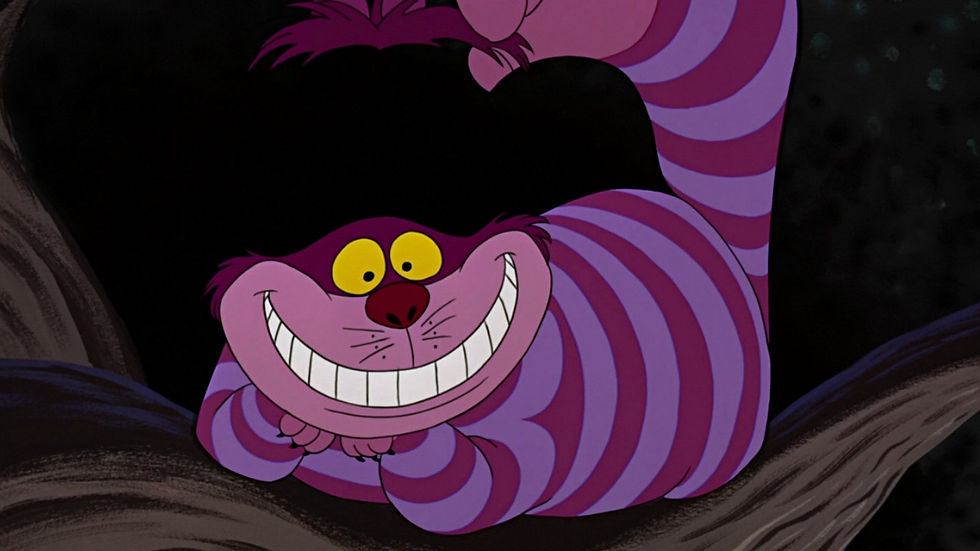
Easter Eggs
#1 Opening Credits
In the opening credits, Lewis Carroll is spelt incorrectly, as 'Carrol.'
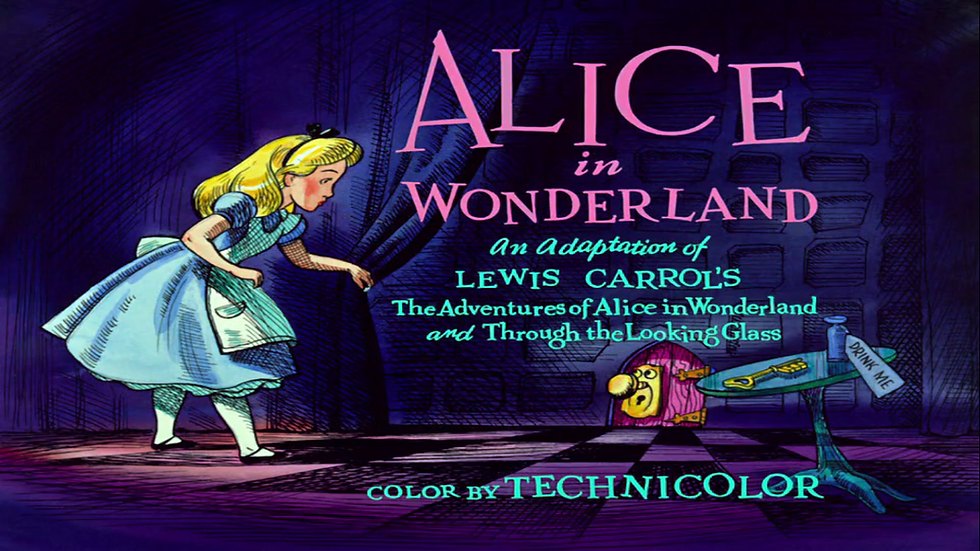
#2 How is a Raven like a writing desk?
During the Tea Party, the Alice is asked how a Raven is like a Writing desk. Carrol never answers his own riddle. The answer is "Poe wrote on both".
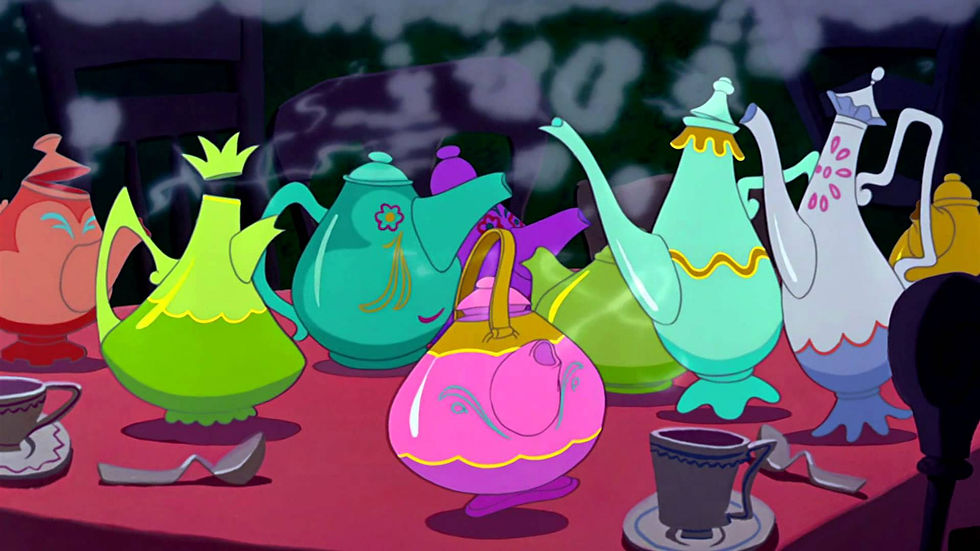
#3 Dodo
In Alice in Wonderland, the character of the Dodo from the Caucus Race is in reality Lewis Carroll himself. Carroll’s real name was Charles Dodgson and he suffered from a stutter. When he tried to pronounce his surname he said “Do-Do-Dogson”, and was therefore called “Dodo” behind his back.
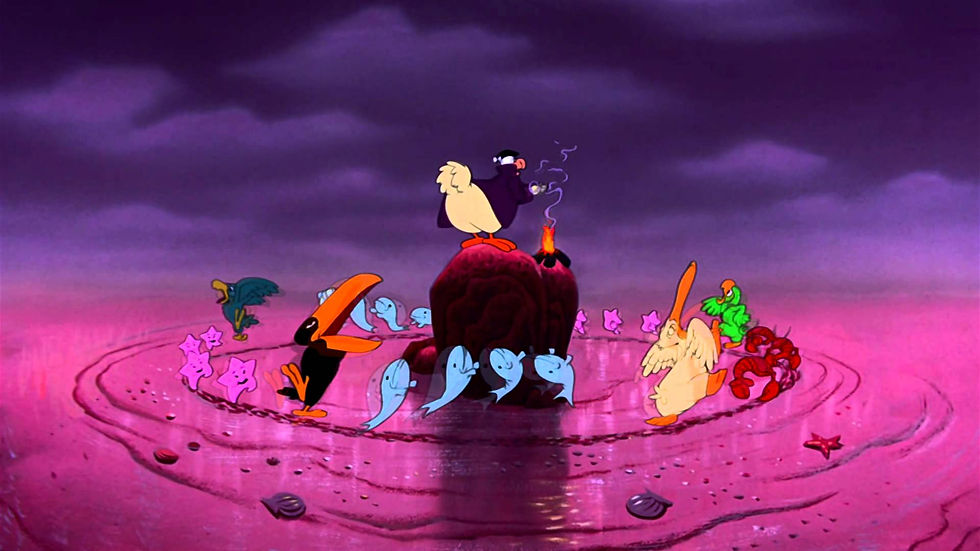
#4 Mushroom error
When Alice shrinks after being huge in the forest, you can see both pieces of mushroom in her hands, untouched, although she has taken a bite out of both pieces.

#5 Caterpillar error
When Alice returns to the caterpillar and he says "keep your temper" he is coloured opposite to how he normally looks, with a dark blue front and light blue back.









Comments